B1010 - Sclerology - A Brief Overview
Store > Store Items > Books > CMG
This Text is produced as a Zipped pdf file, for which a Download Link is given Following Purchase

CMG Books
Sclerology - A Brief Overview - Campbell M Gold - (pdf download)
Immediate availability
Price without discount£7.99
Description
What is Sclerology?
Sclerology is the study of the red lines in the whites of the eyes in order to identify areas of stress in the body, that if left unattended, could in time develop into a serious health problem...

Sclerology - the study of the red lines in the whites of the eyes
The Health Status Equation
For a better understanding of Sclerology, the "Health Equation" should be considered:
Health Status = Physical Inheritance + Environment (diet, lifestyle, etc) + Emotional/Spiritual Factors + Age
Benefits of Sclerology
() Sclerology provides an early warning - an earlier warning than any other eye-science.
Thus allowing an individual the time to effect nutritional and supplementation correction before a condition becomes chronic.
() The lines in the sclera change as health conditions change.
Thus Sclerology is an excellent way to confirm that a therapy is working.
() The sclera's patterns reveal the weak links in an individual's constitution.
Thus, an individual is empowered with self-knowledge that can prevent a genetic weakness from manifesting.
() The Sclerology therapist does not need cameras, magnification, or costly specialist equipment.
() Sclerology helps to prioritise health treatment programs, because when the chief stress pattern is addressed, the body's inherent abilities can heal many other concerns.
() Sclerology is easy to learn.
() Sclerology is an excellent second-opinion to other health-diagnostic modalities, such as iridology, electro-acupuncture, kinesiology, and medical/functional lab testing.
Overview
Many countries have a long tradition of using the Sclera to evaluate health.
The Chinese have used the sclera markings for at least 1000 years, probably longer, and the Native Americans also have a long history of sclera use.
Dr Stuart Wheelright, a Natural Health Practitioner, who apparently learned his first Sclerology from Nez Perce Native Americans, began making drawings in the 1960s.
Dr Stuart Wheelright, a Natural Health Practitioner, who apparently learned his first Sclerology from Nez Perce Native Americans, began making drawings in the 1960s.
Dr Leonard Mehlmauer, Naturopath and Holistic Practitioner, drew his first chart in 1976 - he is one of the pioneers of Iridology and Sclerology, and is the founder of the World Eyology Guild.
Sclerology: def., "Scler" - hard, "ology" - study of; anatomically, the tough white outer coat of the eyeball, covering the entire surface of the eye.
Posteriorly, the sclera is an outgrowth of the optic nerve.
Sclerology: def., "Scler" - hard, "ology" - study of; anatomically, the tough white outer coat of the eyeball, covering the entire surface of the eye.
Posteriorly, the sclera is an outgrowth of the optic nerve.
The posterior part, 5/6th of the total area, is thick, white, and opaque.
The remaining 1/6th anterior portion becomes transparent, and referred to as the cornea.
Scientifically and as an art in practice, Sclerology may be defined as a means of evaluating health conditions, including pathology, via the markings and colourings in the whites of the eyes.
The most obvious sclera markings include:
() Red Lines
() General Colouring
These certainly show data on physical pathology. However, emotional qualities are also available in certain ways.
What is Sclerology?
Sclerology is the study of the red lines in the whites of the eyes in order to observe areas of stress in the body that if left unattended could in time develop into a serious health problem. However, correcting the situation can prevent health problems later or and bring bountiful health into your life at the present time.
How Does Sclerology Work?
Sclerology works by Neuro-muscular reflexes from the brain and optic nerve into the four rectus muscles surrounding each eye. These reflexes transmit direct information about the blood, lymph, and nervous system integrity of many parts of the physical body onto the four main "quadrants" of the sclera, or white portion of the eyes.
The sclera reflects specific parts of the body just as the feet, hands, colon, iris, and ears do.
Scientifically and as an art in practice, Sclerology may be defined as a means of evaluating health conditions, including pathology, via the markings and colourings in the whites of the eyes.
The most obvious sclera markings include:
() Red Lines
() General Colouring
These certainly show data on physical pathology. However, emotional qualities are also available in certain ways.
What is Sclerology?
Sclerology is the study of the red lines in the whites of the eyes in order to observe areas of stress in the body that if left unattended could in time develop into a serious health problem. However, correcting the situation can prevent health problems later or and bring bountiful health into your life at the present time.
How Does Sclerology Work?
Sclerology works by Neuro-muscular reflexes from the brain and optic nerve into the four rectus muscles surrounding each eye. These reflexes transmit direct information about the blood, lymph, and nervous system integrity of many parts of the physical body onto the four main "quadrants" of the sclera, or white portion of the eyes.
Sclerology is not better than Iridology; however, it is an adjunct thereto
The sclera reflects specific parts of the body just as the feet, hands, colon, iris, and ears do.
Reading the sclera helps the individual to identify the cause of the problem at hand...
You might like to try the "Developing Intuition" Hypnosis Program
Lay back and be guided into a pleasant state of deep relaxation through voice, the drowsy sounds of the sea, positive visualisation, and dreamy music ambience. In this hypnotic state, you will access, and reprogram, your subconscious mind to enable you to develop and enhance your sixth sense, perceptions, problem solving ability, and natural power of intuition.
Leave a Comment
0
reviews

